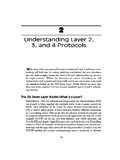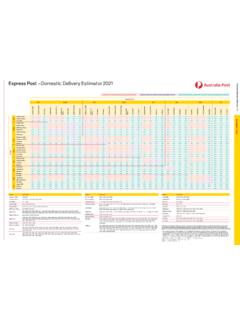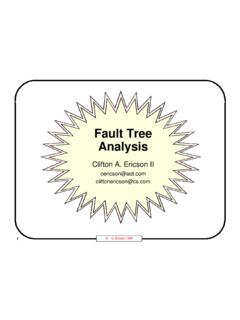Transcription of Medicare Advantage and Section 1876 Cost Plan Network ...
1 Medicare Advantage and Section 1876 Cost Plan Network Adequacy Guidance (Last updated: June 17, 2020) Medicare Advantage and Section 1876 Cost Plan Network Adequacy Guidance (Last updated: June 17, 2020) Medicare Advantage and Section 1876 Cost Plan Network Adequacy Guidance (Last updated: June 17, 2020) pg. i Table of Contents 1. 2. Network Adequacy Specialty Provider and Facility Health Service delivery (HSD) Tables ..2 Provider and Facility Supply File ..2 3. Triennial Network Adequacy Reviews ..3 Triggering Events ..3 Timing of Network Adequacy Reviews ..3 Organization- Initiated Testing of Contracted Networks ..4 4. Exceptions to Network Adequacy Criteria for Submitting Exception Standards for Evaluating Exception Requests.
2 6 Exception Request Upload Instructions ..7 5. Specific Circumstances ..7 Partial Partial County Justification Submission Partial County Request in the Application Module ..9 Regional Preferred Provider 9 RPPO-Specific Exception to Written Sub-Networks ..10 Certificate of Need Telehealth Credit ..11 Appendix A: Crosswalk of HSD Specialty Code to Provide and Facility Appendix B: Partial County Justification Template ..14 Appendix C: External Links ..16 Medicare Advantage and Section 1876 Cost Plan Network Adequacy Guidance (Last updated: June 17, 2020) 1 1. Introduction The Centers for Medicare & Medicaid Services (CMS) regulations at 42 , 42 , 42 (a)(1)(i), and 42 (a)(3)(ii) require that all Medicare Advantage (MA) organizations offering coordinated care plans (CCP), Network -based private fee-for-service (PFFS) plans, Network -based medical savings account (MSA)
3 Plans, as well as Section 1876 cost organizations, maintain a Network of appropriate providers that is sufficient to provide adequate access to covered services to meet the needs of the population These organization types must provide enrollees health care services through a contracted Network of providers that is consistent with the prevailing community pattern of health care delivery in the Network service area (see 42 (a)(10)). On June 2, 2020, CMS published MA and Cost plan Network adequacy rules at 42 to codify our existing Network adequacy methodology and finalize policies that address maximum time and distance standards in rural areas, telehealth, and Certificate of Need (CON) laws. The standards identified at define how CMS quantifies prevailing community patterns of health care delivery for each provider and facility specialty type in each county in a service area.
4 The purpose of this document is to provide additional information related to Network adequacy reviews and how they are conducted in accordance with the standards set at Please note that the guidance contained in this document does not apply to the following product types: Medicare /Medicaid Plans (MMPs), Section 1833 cost plans, non- Network PFFS plans, and MSA plans. 2. Network Adequacy Requirements Organizations must meet current Network adequacy requirements as defined under 42 3 CMS requires that organizations continuously monitor their contracted networks throughout the respective contract year to ensure compliance with the current Network adequacy criteria. CMS Network adequacy criteria includes provider and facility specialty types that must be available consistent with CMS number, time, and distance standards.
5 Access to each specialty type is assessed using quantitative standards based on the local availability of providers and facilities to ensure that organizations contract with a sufficient number of providers and facilities to furnish health care services without placing undue burden on enrollees seeking covered services. CMS programs Network adequacy criteria into the Network Management Module (NMM) in the Health Plan Management System (HPMS) to conduct an automated review of an organization s 1 MA regional preferred provider organizations (RPPOs) are an exception and, under specified conditions and upon CMS pre-approval, can arrange for care in portions of a regional service area on a non- Network basis (42 (a)(1)(ii)).
6 2 The term organization used throughout this document refers to both MA organizations and Section 1876 cost organizations. 3 Provider-Specific Plans (PSPs) are also subject to CMS Network adequacy requirements. As part of the bid submission process that begins in June, an organization offering a PSP must confirm and attest that the PSP s Network meets current CMS Network adequacy standards. Medicare Advantage and Section 1876 Cost Plan Network Adequacy Guidance (Last updated: June 17, 2020) 2 Network adequacy. CMS also provides organizations an opportunity to request exception(s) to the Network adequacy criteria. Specialty Types CMS measures 27 provider specialty types and 13 facility specialty types to assess the adequacy of the Network for each service area.
7 CMS has created specific codes for each of the provider and facility specialty types which may be found in Appendix A. Organizations must use the codes when completing Provider and Facility HSD Tables. Additional information on specialty types and codes is available in the current HSD Reference File posted on CMS s website and in the Network Management Module HPMS User Guide. Provider and Facility Health Service delivery (HSD) Tables Contracts are required to demonstrate Network adequacy through the submission of provider and facility Health Service delivery (HSD) Tables in the Network Management Module (NMM) in HPMS. An organization must list every provider and facility with a fully executed contract in its Network in the HSD Tables4.
8 Organizations can refer to the NMM Plan User Guide, sections Specialty Types and Preparing Your Submission, for detailed instructions on populating HSD tables. In order for the NMM to process the information, organizations must submit provider and facility names and addresses exactly the same way each time, including spelling, abbreviations, etc. Providers should be listed at the address(es) where they see patients in an office-based setting for consultations and not at a location where they solely perform procedures, ( an orthopedic surgeon should be listed at his/her office location, not the hospital where he/she performs surgical procedures). Any differences will result in problems processing data and may result in Network deficiencies.
9 CMS expects all organizations to use the NMM to check their networks and to review the results to ensure that their provider and facility HSD Tables are accurate and complete. The following providers and facilities do not count toward meeting Network adequacy criteria: Specialized, long-term care, and pediatric/children s hospitals Providers that are only available in a residential facility. Providers and facilities contracted with the organization only for its commercial, Medicaid, or other products. Provider and Facility Supply File The supply file is a cross-sectional database that includes information on provider and facility name, address, national provider identifier, and specialty type and is posted by state and specialty type.
10 The supply file is segmented by state to facilitate development of networks by service area. Contracts with service areas near a state border may need to review the supply file for multiple states, as the Network adequacy criteria are not restricted by state or county boundaries. The current supply file is published in HPMS>Monitoring> Network Management>Documentation>Reference Files. 4 RPPOs may list on their HSD tables those non-contracted providers and facilities for which they have a CMS pre-approved exception to the written agreement (42 (a)(1)(ii)). Medicare Advantage and Section 1876 Cost Plan Network Adequacy Guidance (Last updated: June 17, 2020) 3 Given the dynamic nature of the market, the file is a resource and may not be a complete depiction of the provider and facility supply available in real-time.
















